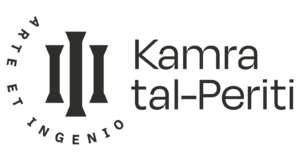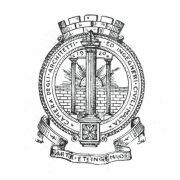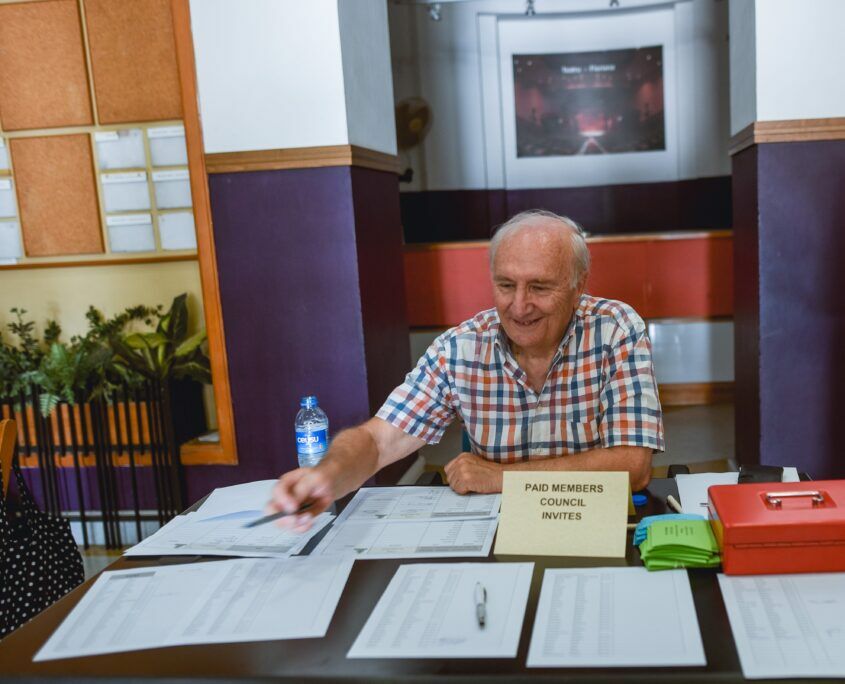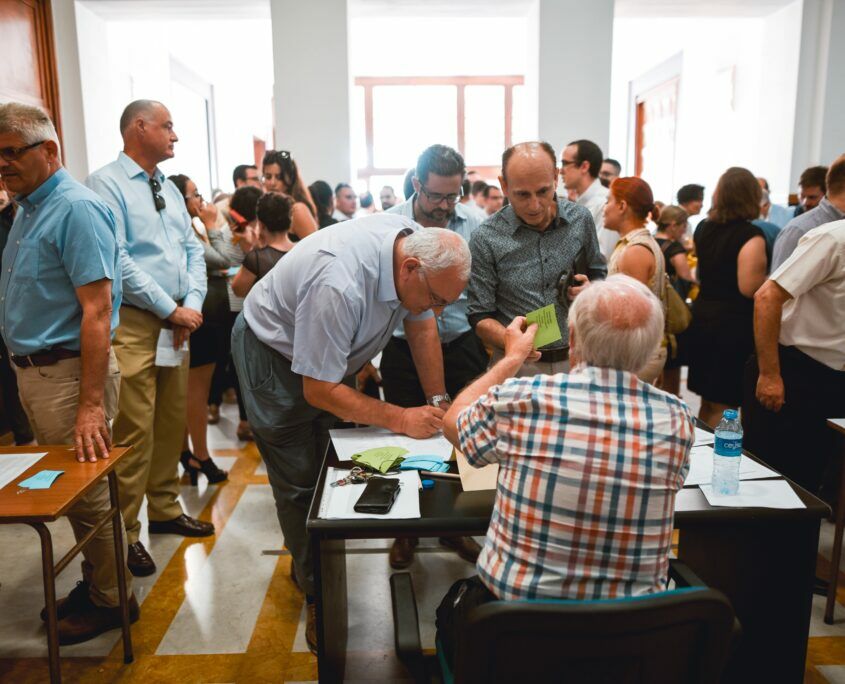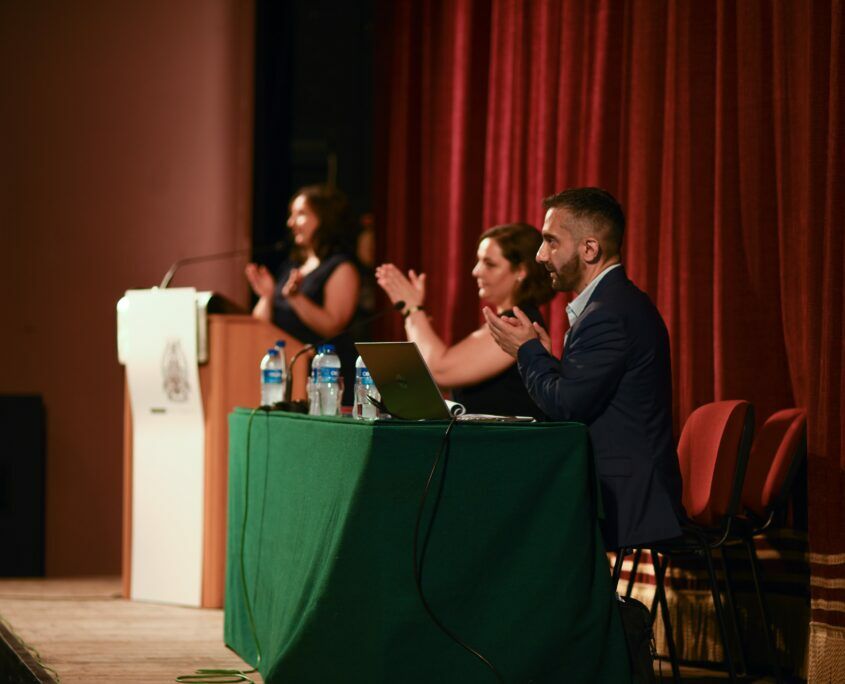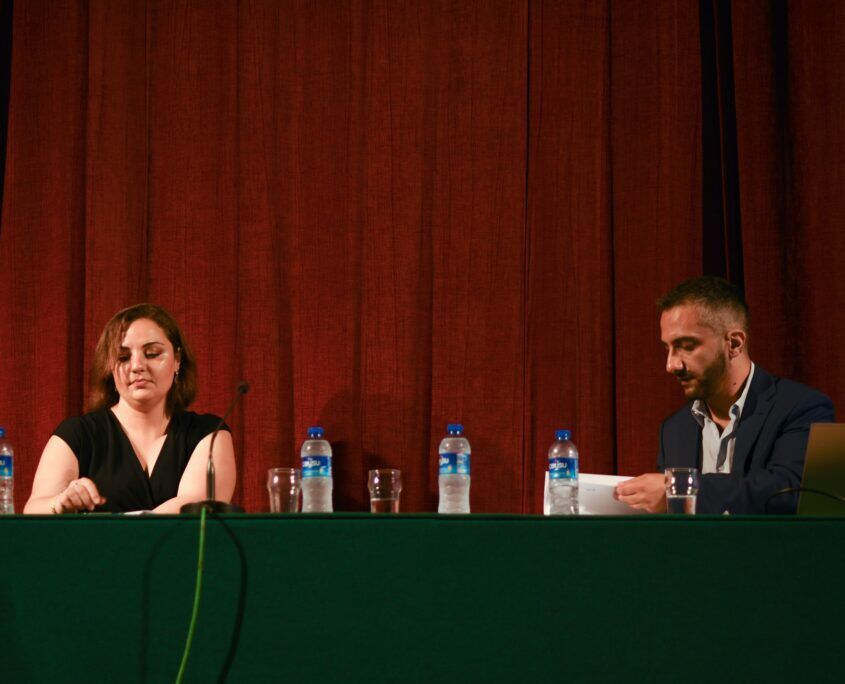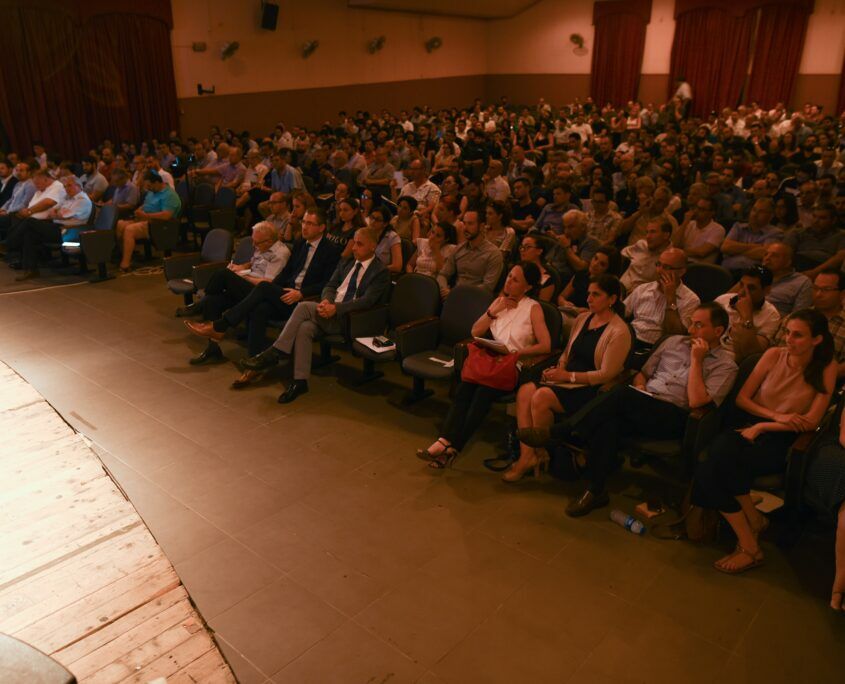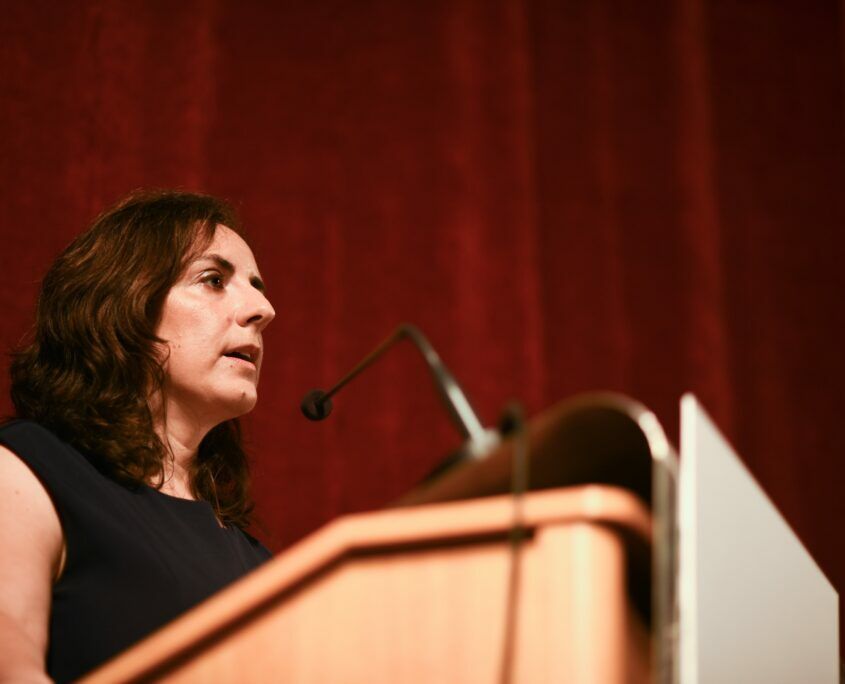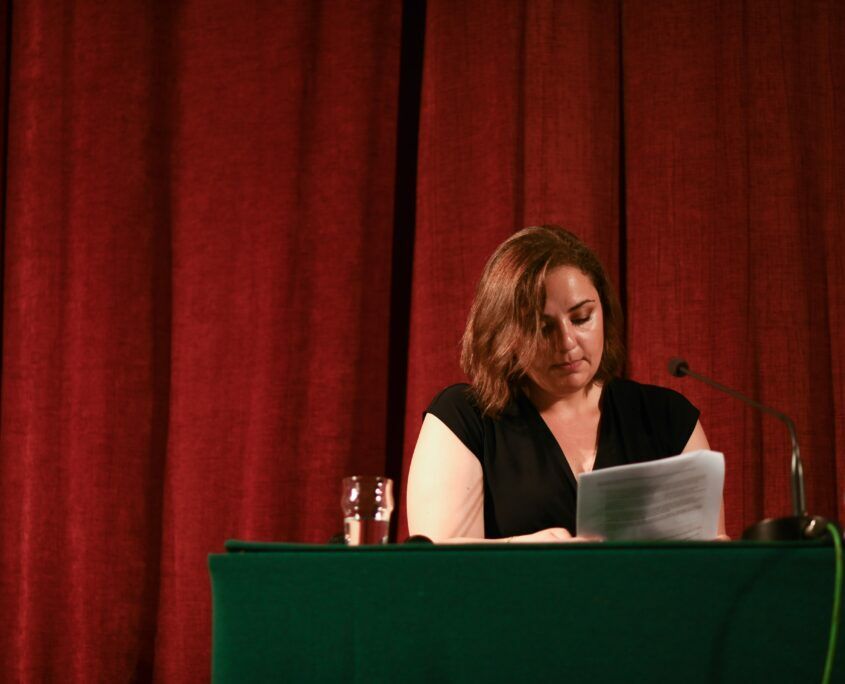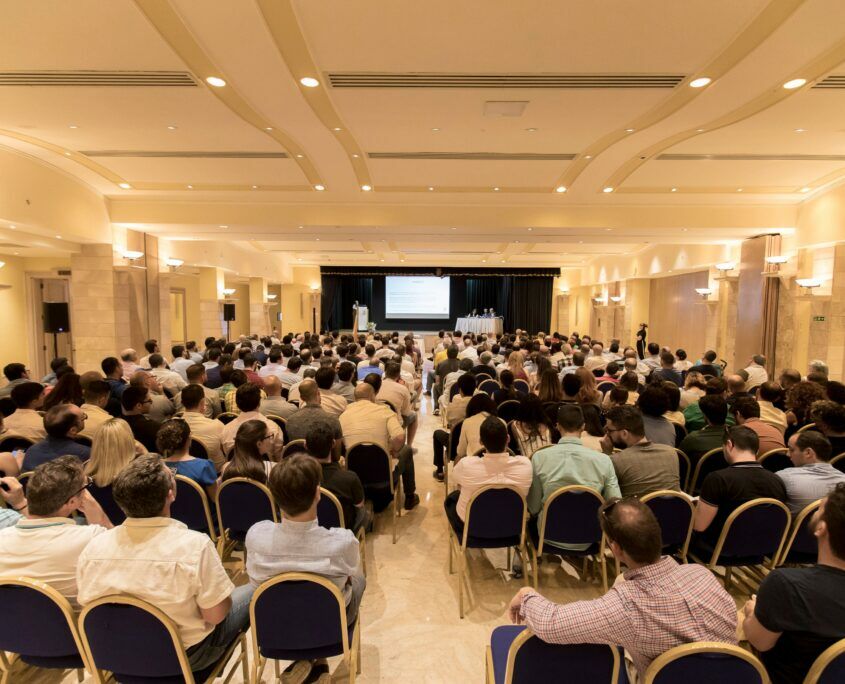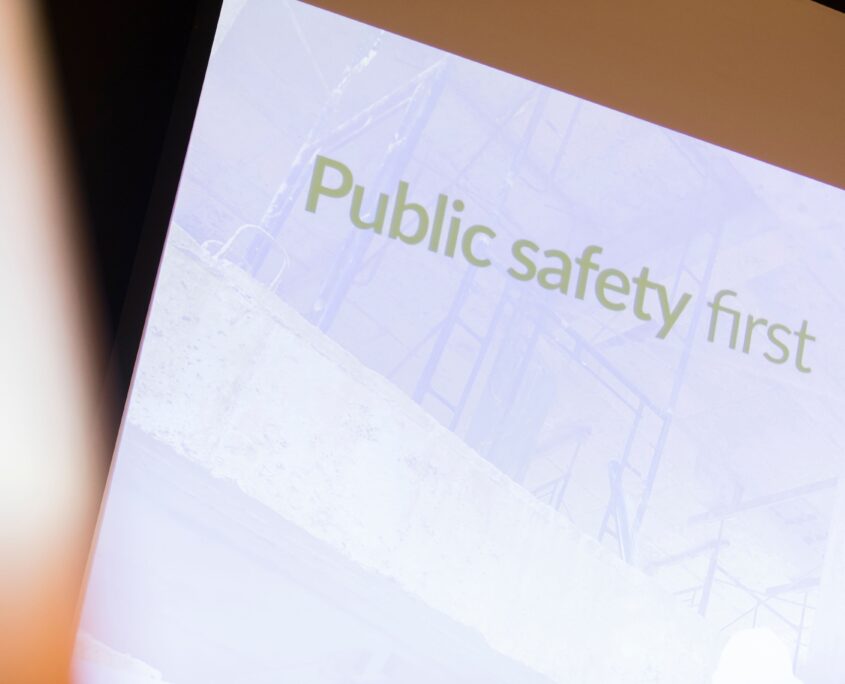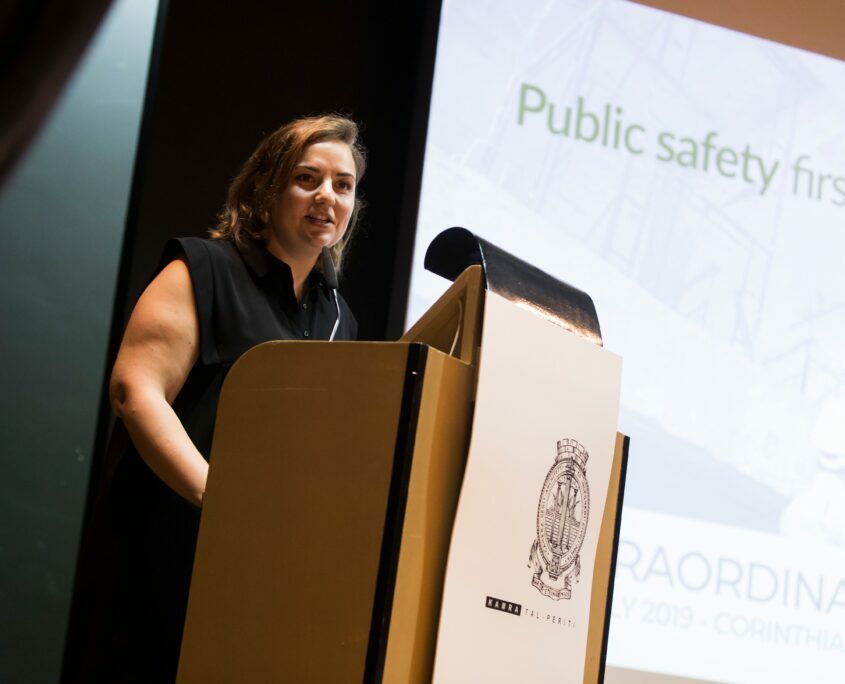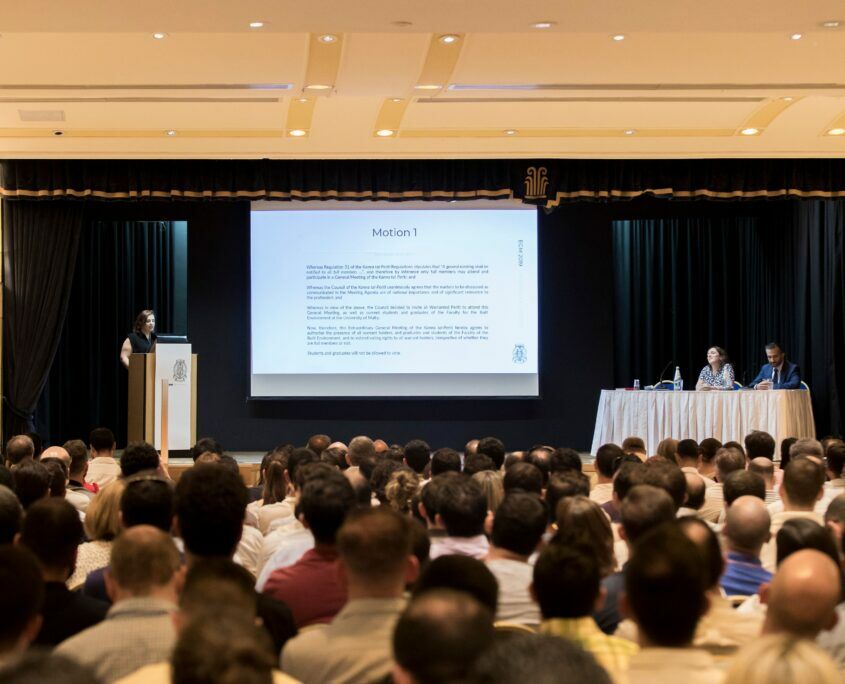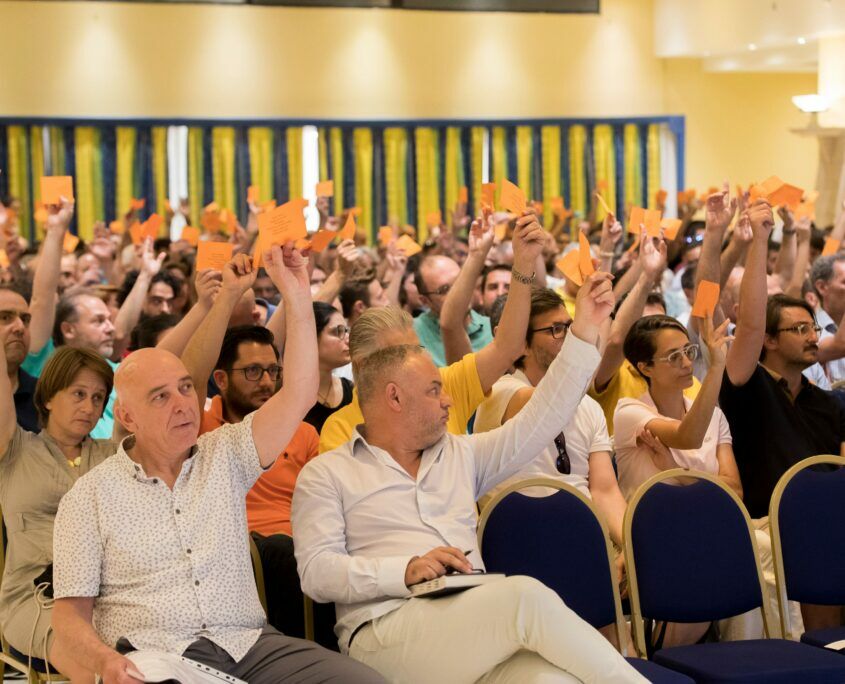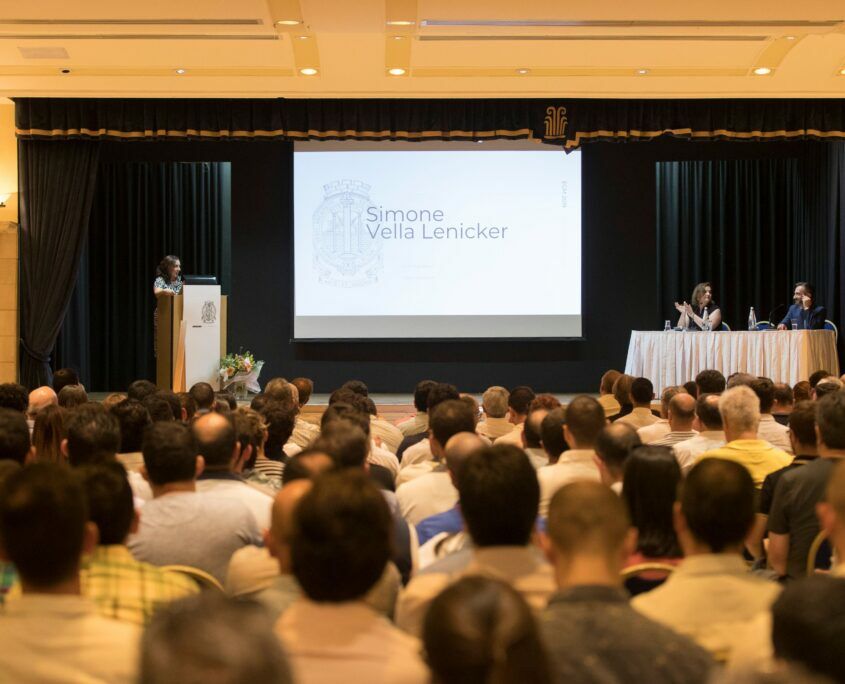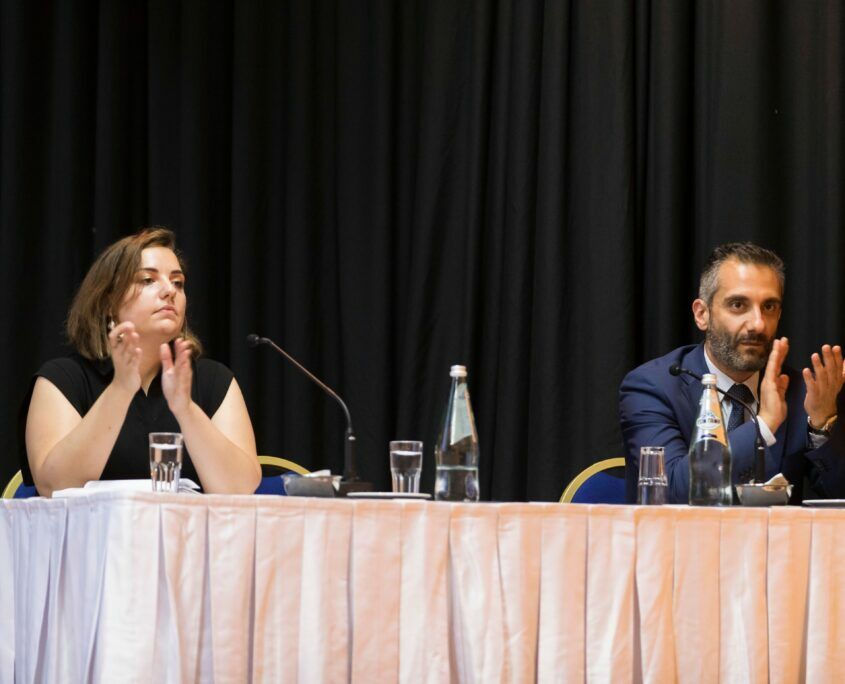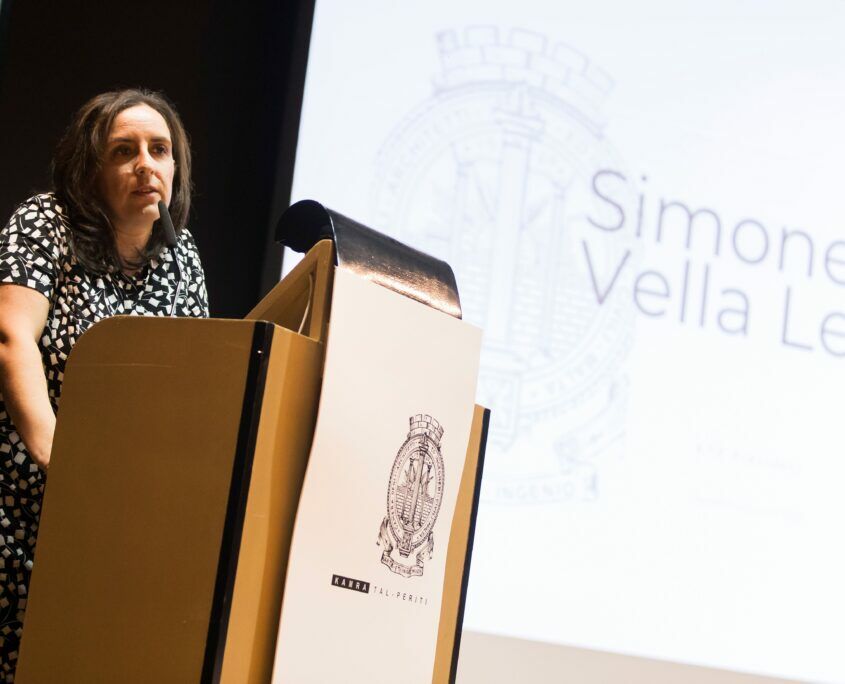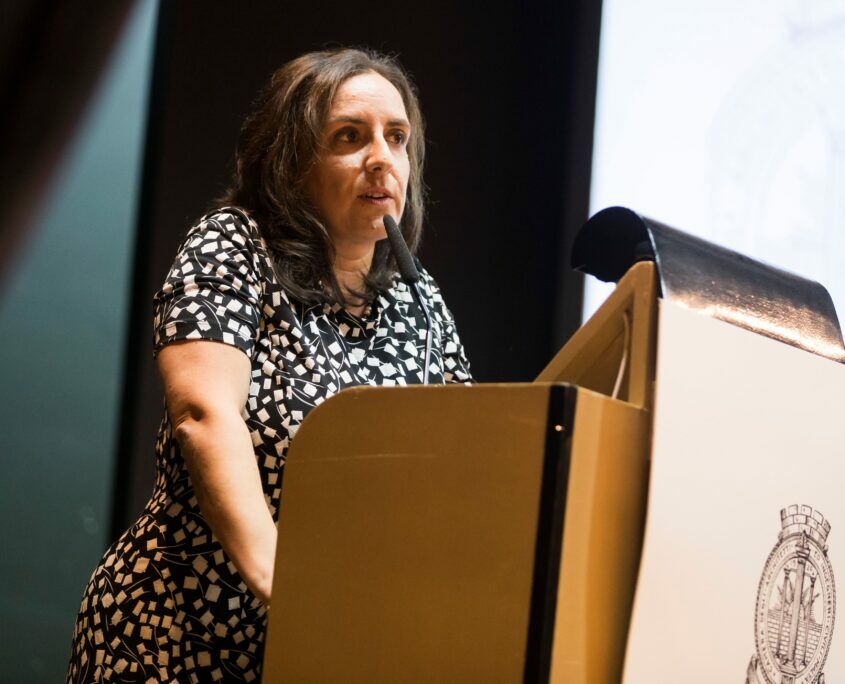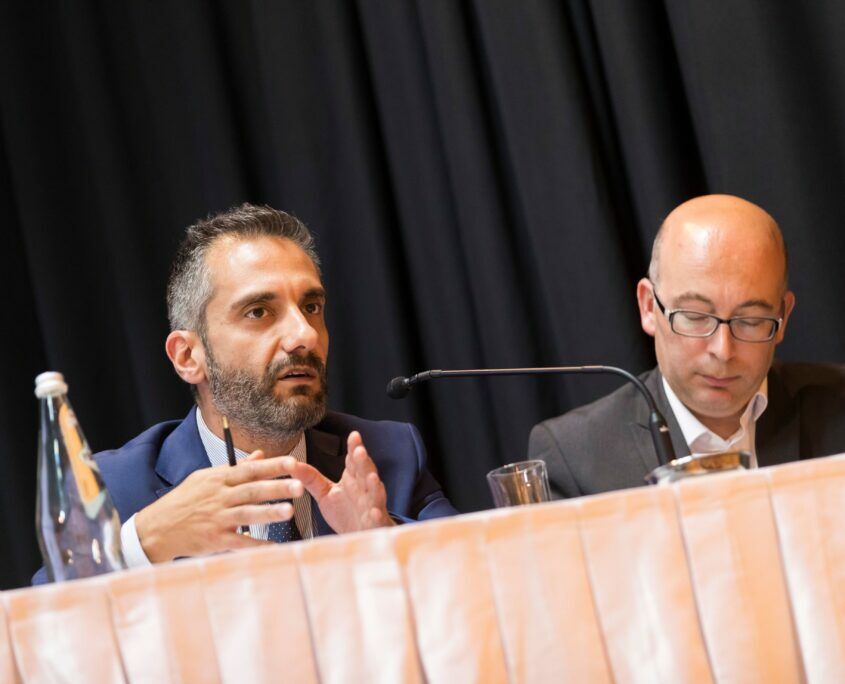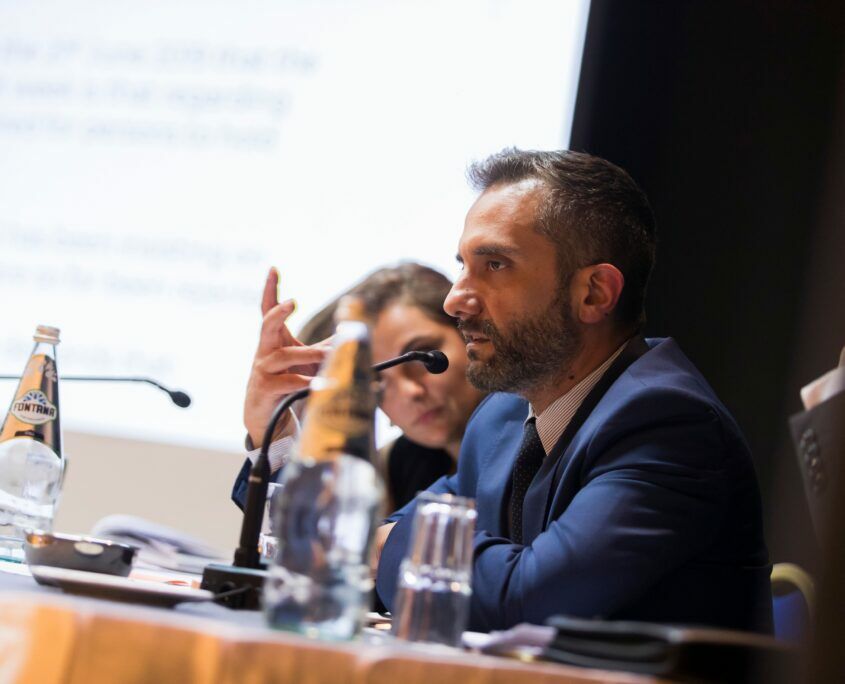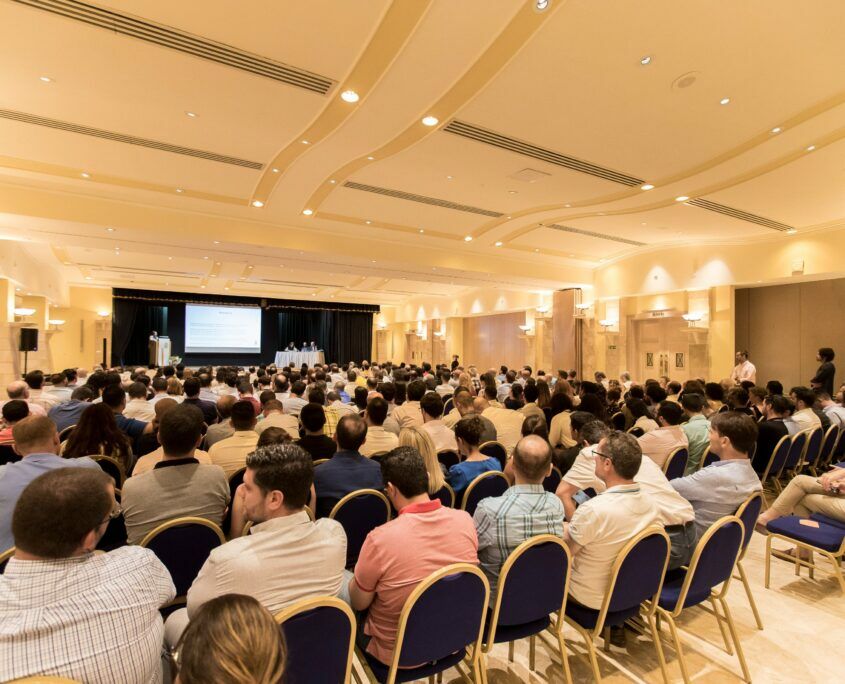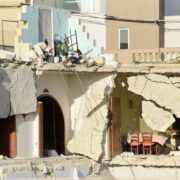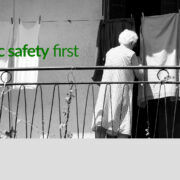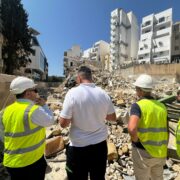CIR 10/19 | Follow up on EGM decisions
Dear Colleagues,
Following the Extraordinary General Meetings held on the 21st June 2019 and the 5th July 2019, the Council has been busy discussing a way forward with Government. Progress has been made on a number of issues, while others remain open for discussion.
Follow up on EGM of the 21st June 2019
Those of you who were present for the first EGM of the 21st June 2019 will remember that this was held on the last day of the public consultation on the draft of the subsequently published LN 136 of 2019. There were a number of points which the profession unanimously agreed required to be addressed, and three overriding matters which the profession confirmed to be unacceptable. These concerned:
- the lines of responsibility between the owner / developer, the contractor and the perit in charge following the introduction of the figure of the Site Technical Officer and certain text in the draft which contradicted other legislation and historically established lines of responsibility;
- the reports and studies required to be submitted, which at the time were considered to be overly onerous for certain small to medium projects; and
- the urgent need for registration, licensing and classification of contractors.
Circular 05/19 was issued on the 26th June 2019 with detailed explanations of each of these points and the situation as at that date. You may read the Circular here.
Following on the Council’s insistence regarding the third point, on the morning before our second EGM, Government announced that registration of contractors would be undertaken as from the 10th July 2019 by the Building Regulation Office (BRO), and that licensing and classification would be in place by the end of the year. This step was announced at a joint press conference headed by Minister Ian Borg and Parliamentary Secretary Chris Agius, flanked by the Kamra tal-Periti as the main promoters of this step, and the Malta Developers Association.
It later transpired that the BRO abdicated its obligations with regard to setting up a register of contractors, passing this task on to the Malta Developers Association, in what seems to be merely an exercise in collection of data, and not registration as originally requested by the Kamra, and as already required by the Building Regulation Act. While it may be argued that this process is not in line with the Act, it is nevertheless a start, and we hope that we will see the ultimate goal of enacting a system of licensing and classification coming into force by December. In this regard, the Council has taken a pro-active approach by drafting proposals for a Legal Notice to establish a workable system that will also lead to better tendering processes and to clear identification of contractor competences. We are working incessantly to ensure that this comes to fruition in the coming months.
Follow up on EGM of the 5th July 2019
During the second EGM held on the 5th July 2019, the Council presented the progress that had been achieved on the points outlined above and on others which the profession had tasked it to work on following the first EGM.
It was noted that while the Legal Notice in its entirety required various adjustments, also to bring it in line with already established local and international practices, and to ensure that it is a workable legislative instrument which truly ensures public safety, there were a number of points which were more important than others and which required immediate attention. The below is a summary of such points, together with a brief outline of the progress achieved to date on each:
- Lines of responsibility between the developer, the perit in charge and the contractor: The Legal Notice contradicts historically established practices, both locally and internationally. On this matter the Council is currently in discussions with the Ministry and the BRO, to address the anomalies highlighted by the Kamra on several occasions.
- Definition of perit in charge: The definition stated in the Legal Notice is: “the perit that is going to assume responsibility for the execution of the project approved in the development permit.” As agreed by the EGM, the perit in charge is not, and has never been, responsible for the execution of the project. That is the contractor’s sole responsibility. The role of the perit in charge is to design, specify, direct, monitor and approve the works, as well as to assume responsibility for the permanent structure. It is therefore important that the definition in the Legal Notice is amended to reflect this. The Council is, concurrently, working with the BRO on establishing guidance regarding the roles and responsibilities on construction sites, however until this exercise is concluded it is imperative that the definition is changed.
- The role of the Site Technical Officer (STO): This role is defined in the Legal Notice, and includes the requirement for the STO to be “present on site whenever decisions are being taken that influence the risk of damage to third party property or injury to persons that may be caused by the works“. However, the definition of the STO’s role also requires her/him to be “responsible for the enforcement of the method statement covering the works which the contractor who nominates him is responsible for.” The “enforcement” of the method statement automatically implies that the STO’s presence on site is much more onerous than being there only when decisions are taken (also considering that the word “decisions” is not really defined). The Legal Notice also implies that if the contractor does not abide by the method statement, the STO may be held responsible, in her/his professional capacity, for the contractor’s failures. It must, in any case be stressed that having an STO on site should not detract from any of the obligations of the perit in charge to monitor the works regularly in order to ascertain that they are compliant with her/his specifications.
- The requirement that the Site Technical Officer (STO) is to be approved by the perit in charge: Legal advice obtained by the Kamra has indicated that this requirement may give rise to possible exposure to colpa in eligendo as a result of the approval of an expert appointed by a third party. The EGM agreed that this matter can be easily resolved by having an official list of persons, including periti and other professionals who register with the BRO to offer the services of an STO. Once these persons are approved by the BRO, there is no need or reason for the perit to approve or otherwise who the contractor decides to appoint to take on this role. It is an established fact that any service provider is responsible to engage competent persons to provide the services requested, and there is no logical reason why the perit must approve who the contractor engages.
- Competences required to carry out the role of STO: At the moment, the Legal Notice only contemplates periti as being capable to carry out this role. Government has already indicated its intention to extend the competences to include Electrical and Mechanical Engineers, and others. On this matter, the Council had presented a list of other competences for Government’s consideration, also keeping in mind Malta’s obligations in terms of the Services in the Internal Market Directive, since the Legal Notice appears to exclude the participation of foreign professionals for this specific role. It is understood that these proposals are being actively considered.
- Works Specifications vs Method Statement: On this matter, there is agreement across the profession that the Method Statements as described in the Schedules should be split into two parts, namely: Works Specifications which are prepared by the perit in charge and which specify the interventions to be carried out on the site; and a Works Method Statement which is to be prepared by the contractor.
- Distinction between temporary and permanent works: One of the main concerns with the Legal Notice is that it does not make any distinction between the “permanent works“, i.e. the final building structure, and the “temporary works”, i.e. the process of erecting such structure. The former is the responsibility of the perit, while the latter is the responsibility of the contractor, under the perit‘s direction. Ultimately, the perit and the contractor carry joint liability for the structural integrity of the final structure in terms of the Civil Code. The terms “permanent works” and “temporary works” are internationally well defined, and are also used locally in a number of projects. Clarifying the works falling under each aspect would make it easier to clarify roles and responsibilities for each.
- Regulations 25 and 26: These regulations deal with the option for the submission of requests for exemption from abiding by all, or parts, of the Legal Notice. At the time of the EGM we were still unsure as to how these would be working, however since then we have had several discussions with the Ministry and BRO, and have worked well with both to come up with solutions through the introduction of the relevant application forms, even though the Council is still of the opinion that some of the wording of the forms requires amendment. The Council is still working hard to put forward its proposals in this regard, to ensure that these changes are effected in order to safeguard the profession in terms of the declarations made on such forms. Further guidance on the use of the relevant forms may be found in Circular 09/19 here.
- Discrepancies between Maltese and English versions: Although at law the Maltese version prevails, the Council is of the opinion that it is important that certain glaring differences between the two versions are amended especially when considering the number of foreign periti, contractors and developers operating in Malta who would more naturally refer to the English text.
Way forward
All of the above positions have been presented to Government in the various meetings held since the last EGM. There is convergence and understanding on a number of points, yet not on others. We have requested an urgent meeting this week, to go through all the above points again, and to get a better understanding of the way forward in addressing them.
Following this meeting, the Council will be in a better position to review the situation, and inform you accordingly. Meanwhile, kindly note that Directive 03/19 and Directive 06/19 still stand. The Council is actively investigating any reports of breaches of said Directives.
Premju Emanuele Luigi Galizia
Allow me to take this opportunity to congratulate, on behalf of the whole Council, the finalists of this year’s edition of the Premju Emanuele Luigi Galizia. The standard of submissions received is very high, and we look forward to another successful edition which promotes quality in architecture and civil engineering, and to encourage excellence in our built environment.
All members of the profession are invited to attend the presentations which the finalists will be making to the various judging panels. A full program can be perused here.
Note
All Directives and Circulars are being sent to all periti who are on the Kamra’s database. If you meet colleagues who are not receiving such communications, kindly ask them to send an email to buildingregs@kamratalperiti.org so that the records can be updated.
Perit Simone Vella Lenicker
President
